Recent Articles
Popular Makes
Body Types
2020 Hyundai Elantra Road Test and Review
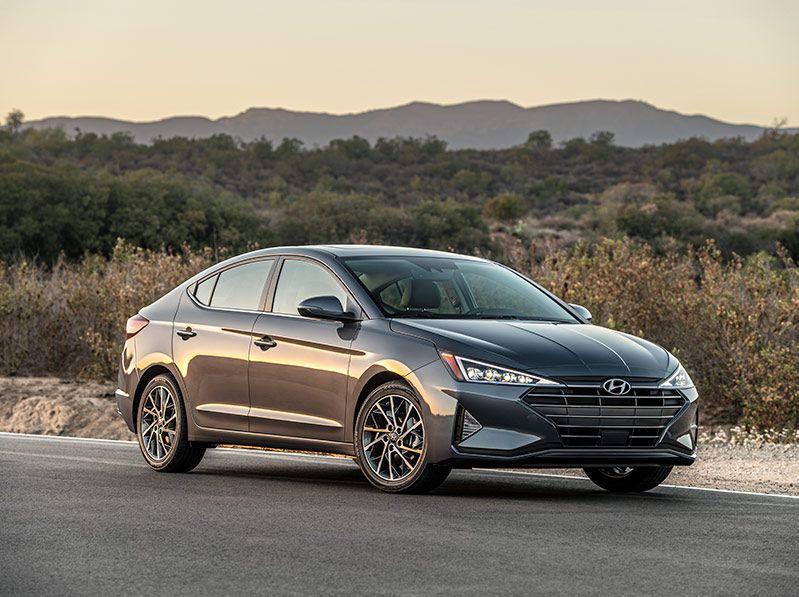
2020 Hyundai Elantra ・ Photo by Hyundai
Modern compact car buyers are blessed. Almost every one of them is appealing in one way or another, and most boast multiple competencies. The 2020 Hyundai Elantra is among them, available in four-door sedan and five-door hatchback (Elantra GT) configurations.
Last redesigned for 2017, the Elantra is one of the oldest designs in the segment. But don’t let that deter you from a test drive. A freshening for the 2019 Elantra Sedan brought revised styling and upgraded technology, while the Elantra GT added a new N-Line sport-tuned variant. Now, changes for the 2020 Hyundai Elantra sedan include a new transmission and more standard equipment, including Hyundai SmartSense safety technologies. The Elantra GT is unchanged for 2020.
You want it? The Elantra’s got it.
Hyundai sells the Elantra sedan in SE, SEL, Value Edition, Eco, Limited, and Sport trim levels. Prices range from $19,880 for the SE to $24,730 for the Sport, including a destination charge of $930.
The Elantra GT comes in standard and N-Line trim levels. You’ll pay $21,580 for the standard version or $24,430 for the N Line. By the way, if you want a manual transmission, the Elantra GT N Line is the only model offering one for 2020. For this review, we drove the Elantra Limited sedan and the Elantra Sport sedan. The Limited features the vehicle's standard engine paired with a new continuously variable automatic transmission, while the Sport has a satisfying turbocharged engine and a newly standard dual-clutch automatic.

Photo by Hyundai
Literally, a Cute Design
We hope you like acute angles because, with last year’s styling update, the Elantra sedan gets a bunch of ‘em. You might even call the design sharp. Literally.
No matter what you think of the end result, there’s no quibbling with the Elantra’s quality. While materials are on par with what you’ll find across the segment, this Hyundai imparts a sense of solidity that is often lacking in compact cars. From how frequently used functions like the door releases, steering column stalks, and transmission shifter feel when used to the drum-tight sensation you get when driving, the Elantra seems like it will last forever. The control layout is also exceptionally well-considered. Knobs adjust stereo volume, station tuning, cabin temperature, and fan speed. Large, clearly marked buttons supplement these knobs, and the gauges are a model of legibility. Hyundai dresses the dashboard up with art-deco vent trim and silver accents, and at night everything glows in a calming blue hue.
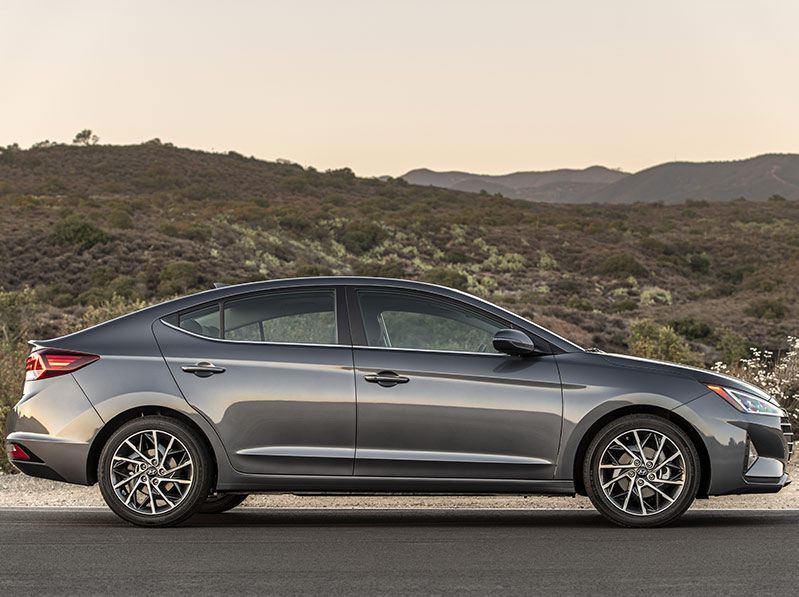
Photo by Hyundai
Nearly Mid-Size Room at Compact Price
It wasn’t all that long ago that you needed a mid-size car for something as roomy and comfortable as the compact 2020 Hyundai Elantra. In fact, most families of four can easily live with a modern compact car like this one. Up front, the seating is comfortable and accommodating, and Hyundai even offers a front passenger’s seat-height adjuster in this car. Most trim levels include heated front seats, and the Limited has a standard eight-way power driver’s seat. the Sport trim includes bigger bolsters for improved lateral support when cornering.
There is decent room in the back seat, and comfort is good thanks in part to proper thigh support. Hard plastic front seatbacks are unkind to the knees and shins of taller rear-seat riders, though, and Hyundai doesn’t offer rear air conditioning vents in the Elantra. Trunk space measures 14.4 cubic feet, a good size for a compact car. An integrated trunklid handle makes it easy to swing it shut.

Photo by Hyundai
All the Infotainment You Need
On the infotainment front, three different systems are offered in the 2020 Elantra sedan. The base SE trim includes a 5-inch touchscreen radio with six speakers, Bluetooth, and a USB port. From SEL trim up, a 7-inch touchscreen display is standard. This system also includes Apple CarPlay and Android Auto, satellite and HD radio, and Bluetooth voice recognition. The Value Edition and Limited trims feature Blue Link subscription services, while Eco and higher trims have dual USB charging ports.
As an option with Limited and Sport trims, navigation is available, accompanied by a larger 8-inch display screen and SiriusXM data services. An Infinity premium sound system is standard with the Limited and optional with the Sport trims. Both our test cars had the upgraded setup, and it is exceptionally easy to use. The Infinity speakers include Clari-Fi digital music restoration technology, and it offers better sound than the Bose system in Hyundai's newly redesigned 2020 Sonata mid-size sedan.
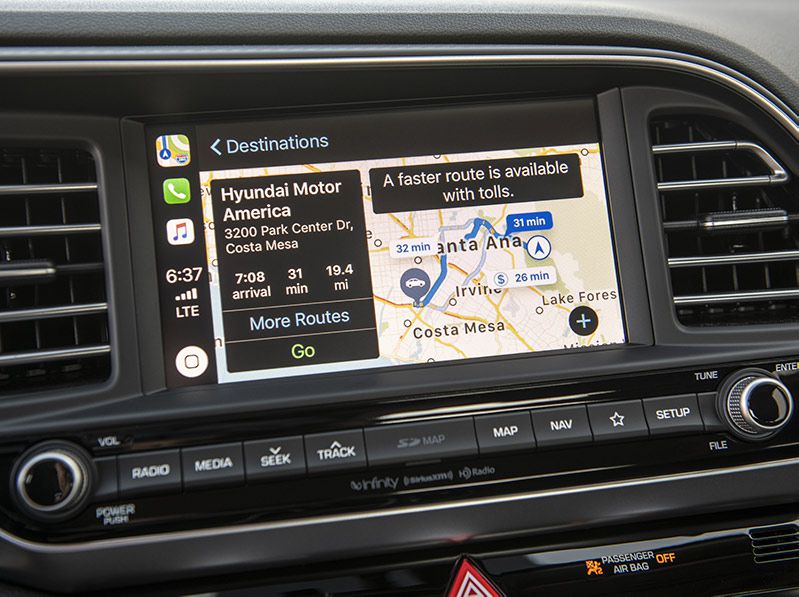
Photo by Hyundai
Safety Comes Standard
New for 2020, Hyundai SmartSense is standard on all Elantra sedans. This is a “lite” version of the suite of advanced driving-assist systems, including nothing more than a forward collision warning, automatic emergency braking, a lane-departure warning, lane-keeping assist, and a driver monitoring system.
Starting with the SEL trim, a blind-spot monitoring system with rear cross-traffic alert is standard, and the Limited trim adds automatic high-beam headlight operation. On the Limited trim, adaptive cruise control, pedestrian detection, and a Safe Exit Assist system are available as an extra-cost option. Safe Exit Assist can warn occupants when it is unsafe to open their door due to approaching traffic. Clearly, in terms of technology, the Elantra Limited is the safest model. And it’s the one that earns a Top Safety Pick+ from the Insurance Institute for Highway Safety. However, all Elantras perform well when it comes to crash protection, earning the top rating of Good in crash tests.
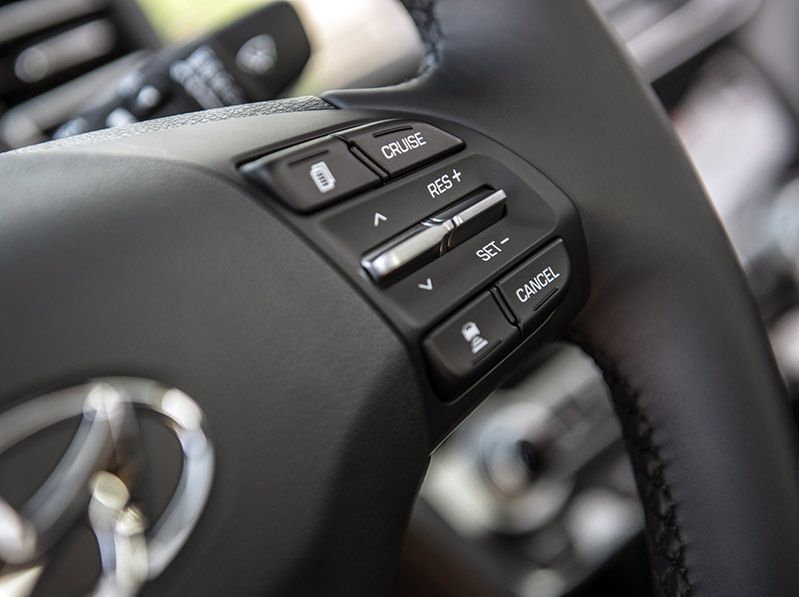
Photo by Hyundai
Three Engines, New “Intelligent” Transmission
Also new for 2020, all Elantra sedans except for the Eco and Sport trims come with Hyundai’s new Smartstream Intelligent Variable Transmission. Basically, this is a continuously variable transmission with enhancements intended to make it sound and feel more like a traditional automatic.
The Sport loses its formerly available six-speed manual gearbox, making the seven-speed dual-clutch transmission (DCT) standard equipment. The Elantra’s Eco trim also has a DCT. A DCT is an automated manual transmission, which means the driver doesn’t use a clutch pedal or shift between forward gears but, internally, the transmission still operates like a manual. As a result, a DCT can sometimes feel hesitant, especially when accelerating from a stop. Most Elantras have a 147-horsepower, 2.0-liter four-cylinder engine. The Sport trim uses a 201-hp turbocharged 1.6-liter four. The Eco employs a 128-hp turbocharged 1.4-liter four. Fuel economy ranges from a low of 29 mpg in combined driving for the Sport to a high of 36 mpg for the Eco.
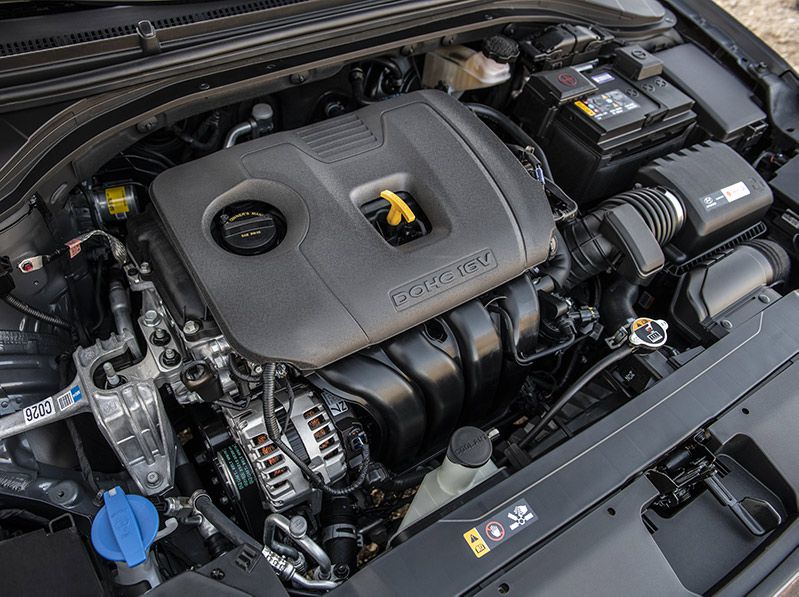
Photo by Hyundai
The Elantra Sport is fun. The others, not so much.
If you like to drive, you’re going to want the Elantra Sport. With its thick band of turbocharged torque and crisp-shifting DCT, it’s the fun one. Plus, it’s the only Elantra sedan equipped with an independent rear suspension design, which improves both the ride and handling. Add sport-tuned steering and suspension, plus upgraded front brakes, and the Elantra Sport is a sensational little sports sedan.
Most people buy an Elantra equipped with the standard 2.0-liter four-cylinder engine. It’s adequate, and while I’m typically not a fan of CVTs, the new Hyundai transmission is actually an improvement because it makes the best use of what little power this motor can muster. Accelerate hard, and the transmission delivers a slight shove of extra force as it changes ratios, a unique and somewhat satisfying sensation. Drivers can choose among Normal, Sport, and Smart driving modes. The Elantra Limited’s steering and brakes are fine, but the inexpensive torsion-beam rear suspension design negatively impacts ride and handling.
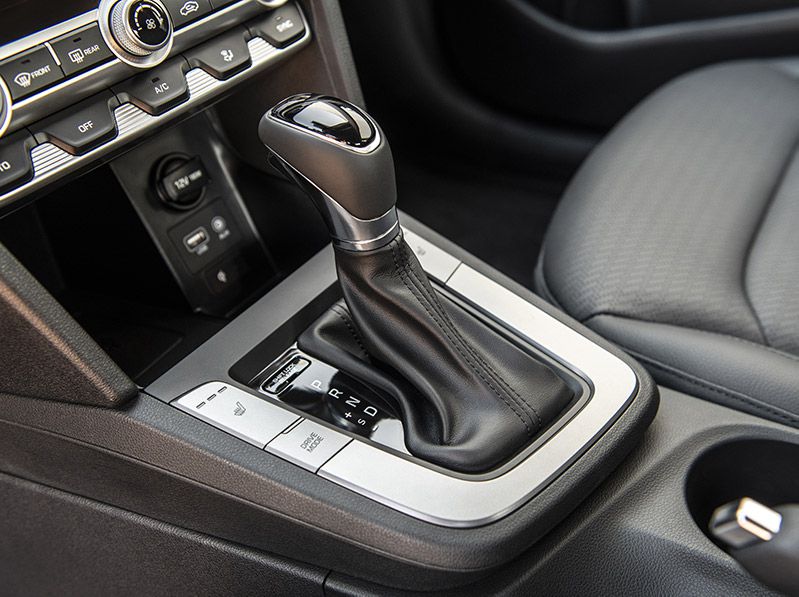
Photo by Hyundai
A Wealth of Choice in the Cheap Car Segment
As we mentioned, there is no shortage of great small cars from which to choose. Honda, Nissan, Toyota, and Volkswagen all sell compelling compacts, and the Mazda3 is basically an entry-level luxury car sold at a discount. Don’t forget the super-safe Subaru Impreza, either, which has standard all-wheel drive. And Hyundai’s sister brand, Kia, offers the great-looking Forte, now offered with the same powertrain found in the Elantra Sport.
So where does that leave the 2020 Hyundai Elantra? It needs a redesign to better compete, but that doesn’t mean you should discount the current version. It’s a raging bargain, virtually guaranteed to deliver years of faithful service, and is roomy enough to serve a family well into the kids’ teenage years.
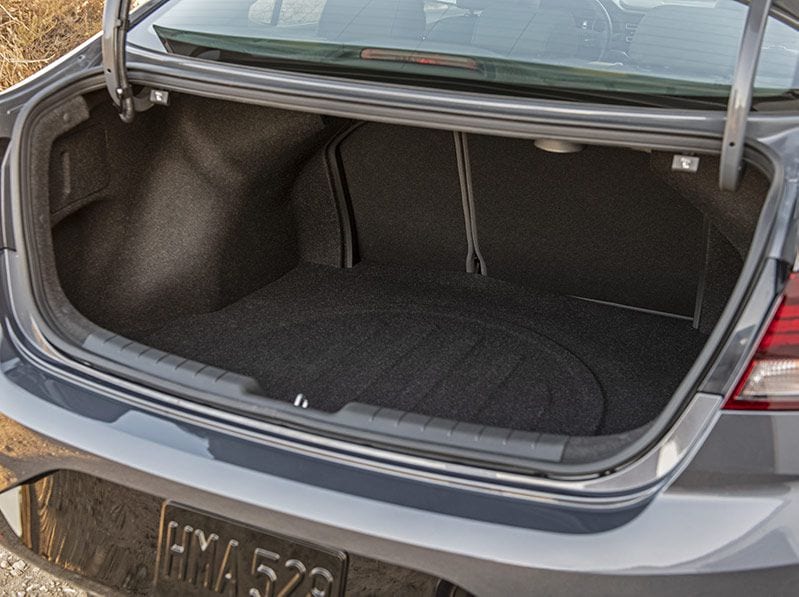
Photo by Hyundai
We recommend the Elantra but look forward to the future.
Hyundai understands its place in the automotive ecosystem. Mike O’Brien, the company’s Vice President of Product, Corporate, and Digital Planning, understands that Hyundai is a “value brand.” Wisely, then, the 2020 Hyundai Elantra, in both sedan and five-door hatchback body styles, delivers a ton of the stuff. From the outstanding warranty and roadside assistance programs to lengthy free trials of Blue Link subscription services in selected trims, the Elantra absolutely excels when it comes to value.
Now add quality construction, thoughtful feature specification, top safety ratings, and frequent discounts and low interest-rate financing, and it’s easy to recommend this car. And both the Elantra Sport and Elantra GT N Line trim levels are genuinely enjoyable to drive. No doubt, when a redesigned Elantra arrives in the next couple of years, it will retain these positive qualities while improving in the few areas where it’s necessary.
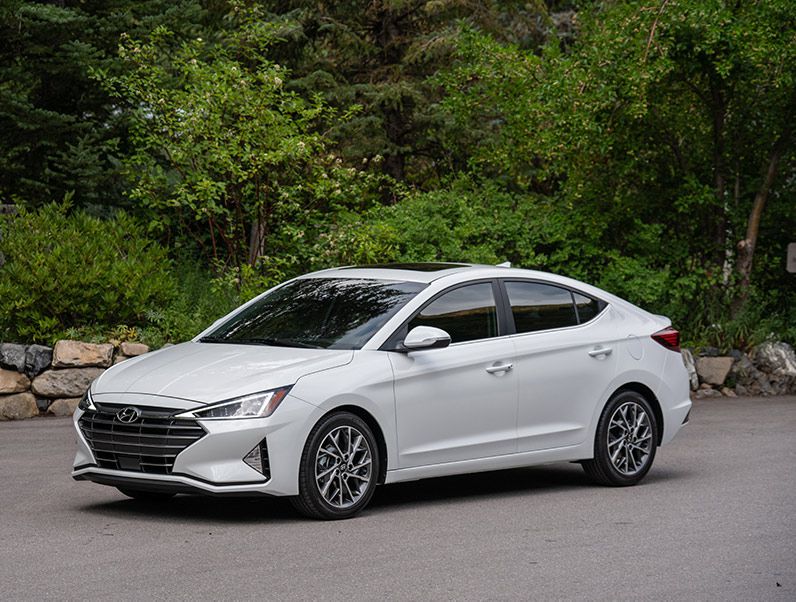
Photo by Hyundai